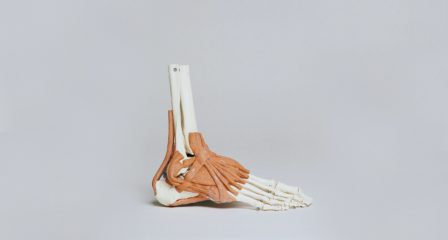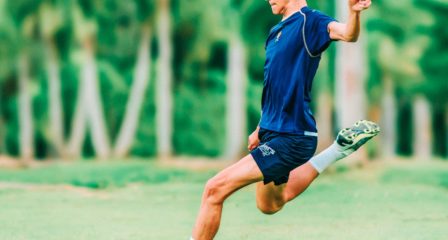The Injury Clinic physiotherapist and strength and conditioning coaches are always staying up to date with the latest research and findings to make sure that they deliver the most effective evidence-based treatment.
Staying up to date with current research is very important for practitioners as it provides:
- Evidence-based information on the effectiveness of treatment/exercises to ensure it is always relevant.
- Their patient care is always of a high professional standard as it aids in informed clinical decisions supported by research.
Current research articles, their summaries and key findings can be found below:
Transfer of training: How specific should we be? (Brearley & Bishop, 2019):
Summary:
- Training transfer is described as the degree of crossover between training and performing. Ex, with a power clean and its impact on a 5-10m sprint.
- Specificity and overload training conflict each other.
Findings:
- General strength is not guaranteed to impact acceleration sprint performances (elite standard). Due to the differences in both outer movement correspondence and local specificity.
- Training transfer is dependent on the level of athletes’ sports performance. General strength training for a novice athlete may be beneficial whereas an elite athlete may not transfer general strength training to sports performance. (Elite athletes will have a history of general strength training).
- Specific strength training and/or imposing overload through variation will be most useful to develop links with training transfer.
Practical Strategies for Integrating Strength and Conditioning Into Early Specilisation Sports (Moeskops et al., 2021):
Summary:
- There continues to be an increased demand for early specialisation (>8 months of training/comp per year) in competitive sports. This has mostly been driven by governing bodies with the introduction of academies and pathway programs targeting talented athletes at an earlier age.
- Early specialisation absolutely produces benefits in very advanced sporting skill from younger ages, however this can often be accompanied with burnout, overuse injuries, hindered motor skill development, and commonly – dropout from the sport.
- It is becoming increasingly more important that these talented athletes ‘fill the gaps’ in their development – of which can be done with LTAD (long term athletic development) centered S&C programs.
Findings:
- It is recommended that early specialising athletes engage in S&C – to target the development of holistic strength, athleticism and a full range of motor skill development.
- While juggling the undulating demands of sport throughout the year – strength programs can be adjusted to manage training loads.
- Programs should be athlete centered, and communicated collaboratively with athlete, skills coach, strength coach and parents.
Sprinting: a key piece of the hamstring injury risk management puzzle (Edouard et al., 2022):
Summary:
- Two-thirds of all acute hamstring injuries occur during sprinting, and improved risk management of hamstring injuries is required, especially in sprint specific sports such as football, soccer, hockey or runners.
- Higher intensity running results in an exponential increase in hamstring recruitment, so a lack of exposure to high intensity sprinting in training may induce a higher risk of hamstring injuries
- This article theorises that a sprint-orientated hamstring risk management strategy can potentially reduce injuries while also improving sprint performance
Applications to Practice:
- The article states that implementing a sprint program should begin with assessing the individual’s posterior chain strength, range of motion, lumbo-pelvic control and sprint mechanics
- When these aspects have been properly addressed, a sprint program should be appropriately progressed with a goal of regular, short sessions of sprinting above 90% intensity at least once a week
- Variant in force velocity of sprinting can be assisted by using heavy sled or downhill running
Clinical and biomechanical outcomes of rehabilitation targeting intersegmental control in athletic groin pain: prospective cohort of 205 patients (King et al., 2018):
Summary:
- Athletic groin pain is a diagnosis which refers to a single or multiple painful anatomic sites within the groin.
- Clinical assessments and rehabilitation in athletic groin pain have historically focused on specific anatomical structures and uniplanar impairments rather than whole body movement.
- The objective of this paper was to examine the effectiveness of rehabilitation that targeted intersegmental control in patients with athletic groin pain and to investigate post rehabilitation changes in cutting biomechanics.
Findings:
- Following rehabilitation, patients demonstrated significant improvements on a self reported questionnaire and with adductor squeeze tests.
- 73% of patients returned to play pain-free at a mean of 9.9 weeks (±3.5).
- There were beneficial changes in participants biomechanics with cutting movement, including reductions in ipsilateral trunk side flexion, increased pelvic rotation in the direction of travel, greater centre of mass translation in the direction of travel relative to centre of pressure, reduced knee flexion angle and increased ankle plantar flexor moment.
Brearley, S., & Bishop, C. (2019). Transfer of training: How specific should we be? Strength & Conditioning Journal, 41(3), 97–109. https://doi.org/10.1519/ssc.0000000000000450
Edouard, P., Mendiguchia, J., Guex, K., Lahti, J., Prince, C., Samozino, P., & Morin, J.-B. (2022). Sprinting: A key piece of the Hamstring Injury Risk Management Puzzle. British Journal of Sports Medicine. https://doi.org/10.1136/bjsports-2022-105532
King, E., Franklyn-Miller, A., Richter, C., O’Reilly, E., Doolan, M., Moran, K., Strike, S., & Falvey, É. (2018). Clinical and biomechanical outcomes of rehabilitation targeting intersegmental control in athletic groin pain: Prospective cohort of 205 patients. British Journal of Sports Medicine, 52(16), 1054–1062. https://doi.org/10.1136/bjsports-2016-097089
Moeskops, S., Oliver, J. L., Read, P. J., Cronin, J. B., Myer, G. D., & Lloyd, R. S. (2021). Practical strategies for integrating strength and conditioning into early specialization sports. Strength & Conditioning Journal, Publish Ahead of Print. https://doi.org/10.1519/ssc.0000000000000665



